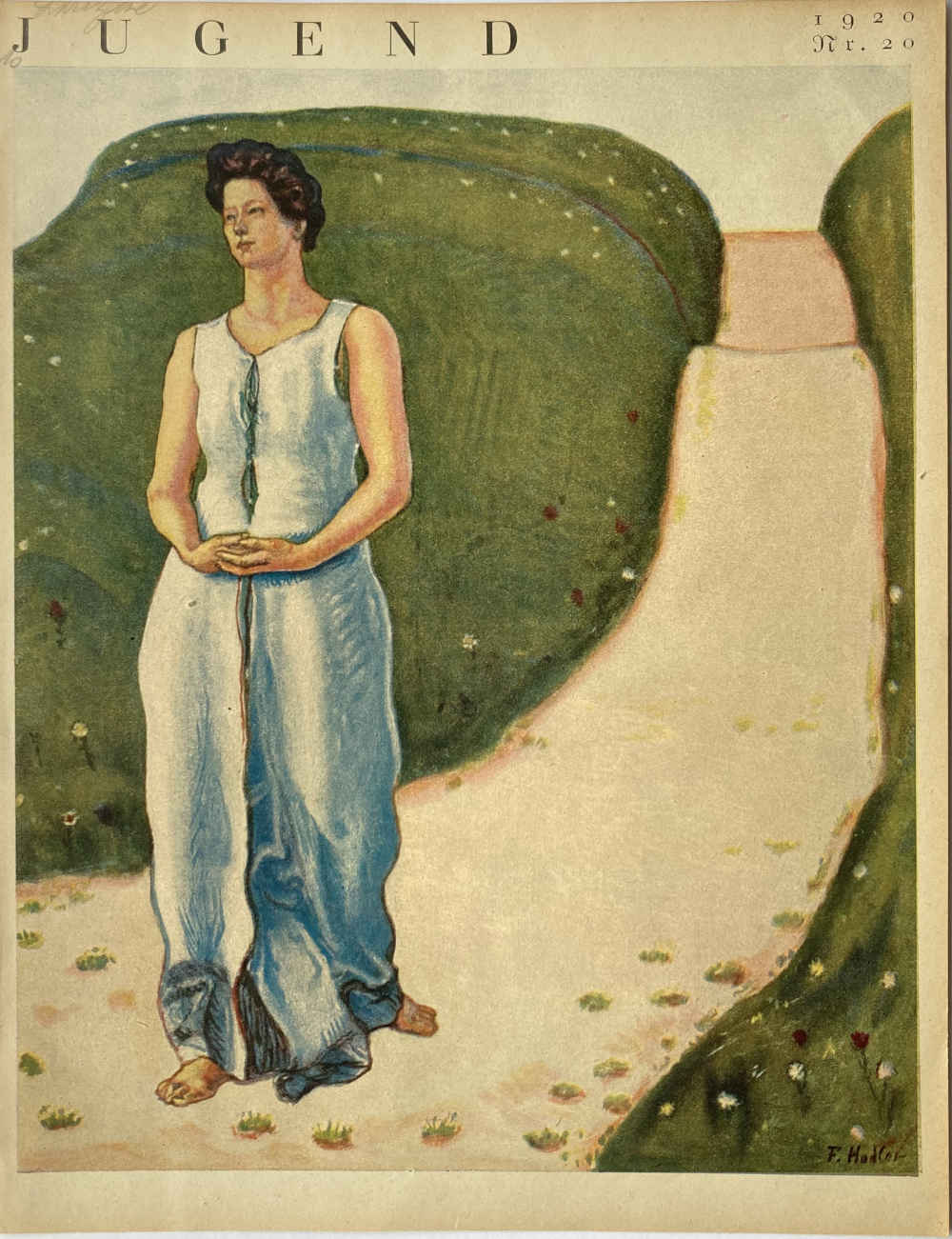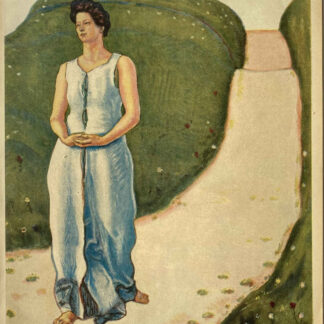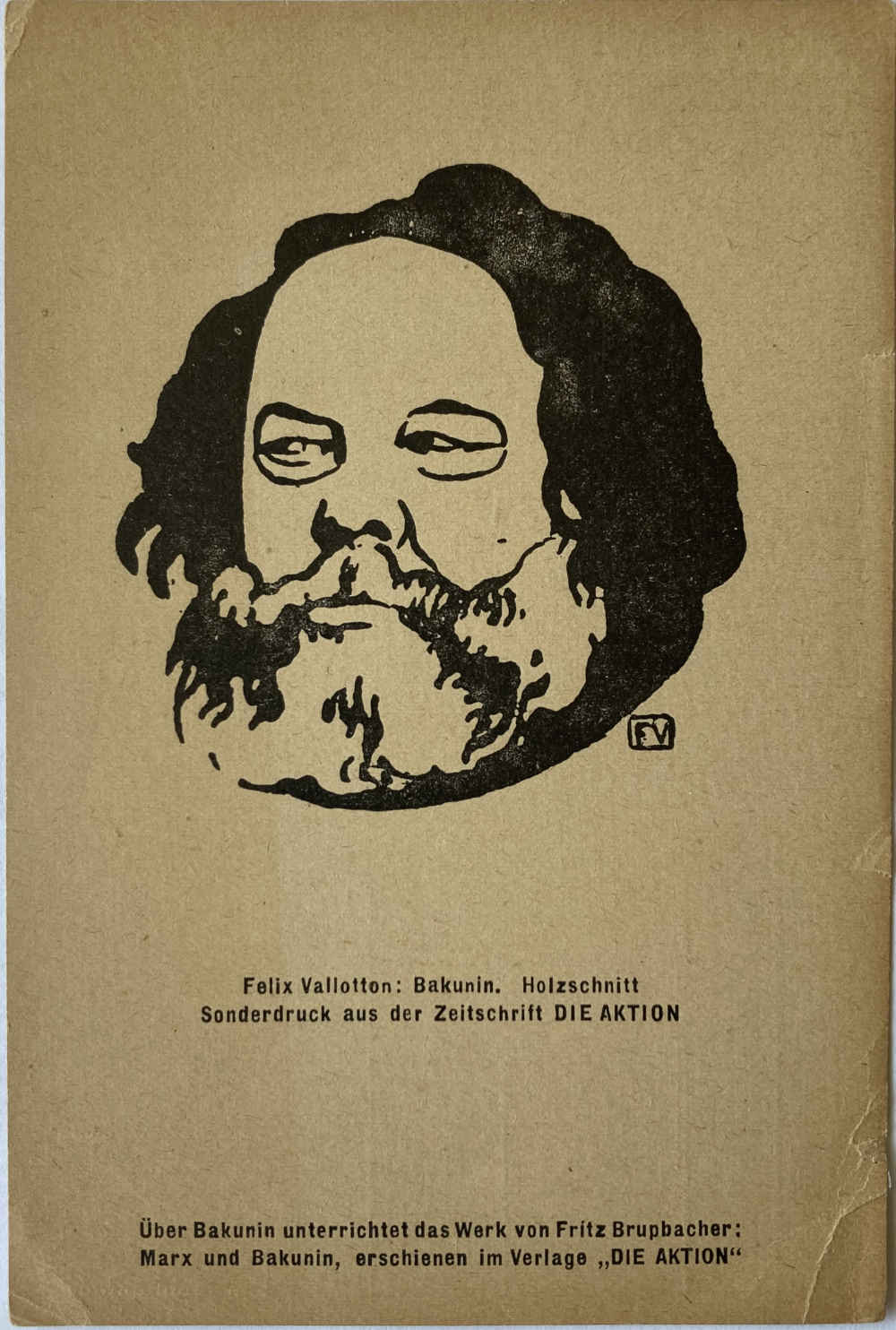Your cart is currently empty!
Modern Style (Jugendstil)
Art Nouveau is an international art style characterised by the use of curved lines inspired by nature and the attempt to blur the boundaries between fine and applied art. Art Nouveau had its heyday between 1890 and 1910 and is considered a reaction to the isms of the 19th century such as academicism, eclecticism and historicism.
The most important theorists of the movement were the French architect Eugène-Emmanuel Viollet-le-Duc (1814-1879) and the British art critic John Ruskin (1819-1900). The artist William Morris and the Arts and Crafts movement were very influential in Great Britain. In Germany, the aim was to create a Gesamtkunstwerk, a complete work of architecture and design that would convey an overall aesthetic experience.

Art Nouveau
The term ‘Art Nouveau’ was first used to describe the work of the group ‘Les Vingt’ (‘The Twenty’) in the Belgian newspaper ‘L’Art Moderne’ in the 1880s. Founded in Brussels in 1883, this group sympathised with Viollet le Duc’s theories, particularly the integration of decorative art and architecture.
The art gallery Maison de L’Art Nouveau in Paris, founded by the art dealer Siegfried Bing, contributed to the spread of this term, which was adopted in Great Britain, while Style moderne and many other terms were used in France.
In Germany, the new art style was labelled Jugendstil, derived from the art magazine “Jugend: Münchner illustrierte Wochenschrift für Kunst und Leben”, and had its heyday in Germany and Austria between 1895 and 1910. In Austria, Art Nouveau was also known as the Vienna Secession. In Great Britain, it was sometimes also called Modern Style or Glasgow Style, after the Glasgow School. In Italy it was called Stile Liberty and in Spain Modernismo.
History of Art Nouveau
The floral designs of William Morris can be seen as the roots of Art Nouveau, as can the Art and Crafts movement founded by his students. The Red House designed by Philip Webb, whose interior was designed by William Morris, is considered one of the prototypes of Art Nouveau.
Pre-Raphaelism also had a major influence on the new movement with painters such as Dante Gabriel Rossetti and Edward Burne-Jones, and the influence of graphic artists was just as decisive. The cover of the book ‘Wren’s City Churches’ by Arthur Mackmurdo from 1883 is considered the first known graphic work of Art Nouveau, as is his famous chair from the same year.
At the same time in France, the theorist Eugène Viollet-le-Duc was formulating new ideals based on his studies of medieval art, which were directed against the prevailing historical architectural style. He argued that the form of architecture should be adapted to the needs of man, also according to the logic of nature, but using modern materials and technologies. His book ‘Entretiens sur l’architecture’, published in 1872, influenced the most important architects of his time, such as Victor Horta, Hector Guimard, Louis Sullivan and Antoni Gaudí.
Another important influence on this style was Japonisme (Japonism). Japan participated for the first time as an exhibitor at the London Great Exhibition of 1862, and from that time onwards, decorative shops as well as art books and art magazines devoted to oriental art, especially Japanese art, appeared. Ukiyo-e art in particular, represented by artists such as Hokusai, Hiroshige and Utagawa Kunisada, had a major influence on Art Nouveau prints, furniture, porcelain and jewellery and on artists such as Gustav Klimt.
Thanks to art magazines, which used new printing techniques such as colour lithographs and photographs, the new style was spread and popularised worldwide.
-

Ferdinand HODLER (* 1853, † 1918) – Title Page of JUGEND Magazine (1920 no. 20) with Print of ‘The Silence of the Evening’
$444.60incl. shipping by post
Delivery time: 7-14 days
Add to cart -

Hans TREIBER (* 1869, † 1968) – Oil Painting with a Brook – Art Nouveau Painting
$795.60incl. shipping by post
Delivery time: 7-14 days
Add to cart
Art Nouveau in art, decorative arts and architecture
An early prototype of Art Nouveau in terms of the unification of the arts was the Red House in Bexleyheath (near London), built by the architect Philip Webb for William Morris between 1859 and 1860. With the exception of the carpets and crockery, all the decoration was designed by the pair, with Edward Burne-Jones helping with the stained glass windows. The building was inspired by British late Gothic techniques but adapted to the needs of the time. Morris also integrated the design of the garden with that of the house, creating four small gardens separated by rose trellises. The passion flower was designed to climb up the walls of the house.
Another influential landmark of Art Nouveau was the ‘Peacock Room’ , which was designed for a terraced house in the Kensington district of London. It was a collaboration between the painter James McNeill Whistler and the architect Thomas Jeckyll , who pioneered the creation of an Anglo-Japanese style of interior design. The room was built between 1876 and 1877. This dining room was designed as a porcelain room to house the owner’s collection of Chinese porcelain. Jeckyll designed an intricate network of shelves, which in turn framed paintings and panels decorated with peacocks.
Between 1892 and 1893, the first two Art Nouveau houses were built in Brussels almost simultaneously: the Hôtel Tassel by Victor Horta and the Hankar House by Paul Hankar. As an assistant to Alphonse Balat, Victor Horta had experience in the construction of iron and glass buildings, such as the Royal Greenhouses of Laeken, and was himself strongly influenced by the ideas of Viollet-le-Duc. In the Hôtel Tassel, Horta made the staircase of the house a central element by leaving it open and illuminated by a skylight, an element he repeated in all his houses. The staircase was made of wrought iron and fitted with a curved banister. Iron pillars protrude from the floor, imitating tree trunks. Both the floor and the wall mosaics were decorated with arabesques of plant shapes, which became the most important element of the style.
As an ornamental sculptor, Paul Hankar was more interested in the interplay between decorative and fine art. When he built his own house, he invited the sculptor René Janssens and the painters Albert Ciamberlani and Adolphe Crespin for the exterior and interior decoration. Here, the neo-Renaissance style is mixed with the ideas of Viollet-le-Duc. The façade shows the functions of the interior, such as the staircase, which is offset by half a storey, giving the façade an asymmetry that is also typical of the style. The different sizes of the windows make it possible to understand the different functions of the rooms. The exterior decoration plays on the one hand with the contrast between the heavy materials of stone and brick and the lightness of elements such as wrought iron railings with floral motifs, sgraffito and wall panels, resulting in a very dynamic composition. This façade had a direct influence abroad, and Hector Guimard made a drawing of it as early as 1895.
Art Nouveau ceramics
Ceramics played an important role in Art Nouveau. It was also used as a decorative element on façades, including faience. And of course, the ceramics of this period were heavily influenced by traditional and modern ceramics from Japan and China. In addition to technological innovations, old techniques such as sang de boeuf glazing and stoneware with matt glazes were also rediscovered.
In the English-speaking world, Art Nouveau ceramics are categorised as part of the ‘Art Pottery’ movement, which peaked between 1870 and 1930 and was part of the Arts and Crafts movement, which emerged as a reaction to the technically outstanding and highly decorated European porcelain. The pieces produced were mostly turned and were unique due to the random use of glazes. They were also usually made from start to finish by a single worker, as opposed to mass production in factories, although they were also made in them. Britain and France were the best known countries for the production of art pottery.

One outstanding artist was the French artist Émile Gallé, who in ceramics mainly produced plates and vases with traditional floral motifs and colours imitating the earth, and excelled in glass art with equally naturalistic motifs, but with innovative themes, colours and techniques. He studied botany with the director of the botanical garden in Nancy, his home town, and later in Weimar, where he also studied chemistry in glassmaking, drawing and sculpture and made hundreds of drawings of plants and insects. His passion for plants took him to Italy and Switzerland to collect them. He later owned his own garden, which he used as a source for his models and required the artists who worked for him to use real plants when painting. For his glass artworks, he used different layers of glass in different colours and patterns and exploited the difficulties of the material, such as the formation of bubbles, to achieve expressive effects, which he called ‘patina’. He succeeded in creating new colours such as the so-called ‘clair de lune’ (moonlight), which were massively imitated by artists, especially in Germany and England. His most characteristic colours were deep violet, pink and green. Émile Gallé’s style was at the forefront of Art Nouveau.
Another pioneering ceramist was Ernest Chaplet, who was initially strongly influenced by Japanese and Chinese ceramics. He worked with Paul Gauguin on designs with applied figures and with sculptors such as Auguste Rodin and Jules Dalou.
The most important companies were the Manufacture nationale de Sèvres, Meissen, Villeroy & Boch and Doulton. Other important French ceramists of the movement were Pierre-Adrien Dalpayrat, Auguste Delaherche, Taxile Doat and Edmond Lachenal, each with their own style.
An important group of Art Nouveau ceramists in France is the so-called École de Carriès from Saint-Amand-en-Puisaye. These were ceramists who worked around the ceramist Jean Carriès in Saint-Amand-en-Puisaye and were sometimes very similar in style. The École de Carriès includes, among others:
• Jean Carriès
• Théo Perrot
• Georges Hoentschel
• Emile Grittel
• Jean Pointu
• Pierre Pacton
• Paul Jeanneney
• Eugène Lion
• Nils de Barck
• William Lee
• Henri de Vallombreuse
Ceramics were also used in architecture. Hector Guimard and Jules Lavirotte decorated their façades with it, often by the Alexandre Bigot company. Mosaics were also used as a decorative element, both on façades and on floors and walls. For example, in the decoration of the façade of Otto Wagner’s Majolica House in Vienna.
Antoni Gaudí‘s buildings in Barcelona also utilised the trencadís technique he invented, in which clay shards were reused.
In Hungary, the Zsolna factory is known for its Art Nouveau ceramics.
Art Nouveau paintings
The painters who followed the artistic principles of the Art Nouveau movement did not want to define themselves as such, but came from other artistic movements such as Post-Impressionism or Symbolism or identified with them. Les Nabis in particular, who were active between 1888 and 1900, transcended the boundaries between the decorative and fine arts and painted on both canvas and panel, while also being strongly influenced by Japanese aesthetics. Pierre Bonnard, Édouard Vuillard, Maurice Denis, Paul Sérusier and Félix Vallotton belonged to this group, which came out of the Académie Julian in Paris.

The most famous painter of the style was Alfons Mucha, who created numerous posters in a theatrical style during his time in Paris. Gustav Klimt from Vienna also contributed to the painterly development of the style. His murals in the Palais Stoclet in Brussels are considered masterpieces.
Art Nouveau sculpture
There were also works in Art Nouveau sculpture, with statues and reliefs being integrated into the architecture. Typical were animal motifs such as owls or bats, more fantastic motifs such as dragons and gargoyles, but also more classical figures such as putti, caryatids and atlases, which were interpreted in a more ornamental manner.
On the other hand, the paths of sculpture and ceramics crossed in many countries. The porcelain figure ‘Dancer with Scarf’ by Agathon Leonard was honoured at the 1900 Paris World Exhibition in both sculpture and ceramics.
Art Nouveau graphics
Thanks to the development of new printing techniques such as colour lithography, posters and illustrated art magazines could be reproduced on a massive scale, including with Art Nouveau motifs.

Eugène Grasset was one of the first artists to create Art Nouveau-style posters for Parisian festivals and illustrations for numerous books. Henri de Toulouse-Lautrec created posters for theatres, cafés and cabarets.
The poster for Gismonda, which depicted the actress Sarah Bernhardt, brought Alfons Mucha enormous fame. He later designed stage sets, costumes and jewellery for her and received numerous other commissions for posters for products such as cigarettes and biscuit packets. In Vienna, Koloman Moser was known for his posters. In Great Britain, Aubrey Beardsley was an important artist. His black and white illustrations made him popular. In 1893 he began to design further illustrations and posters for the art magazine The Studio.
Félix Vallotton is known for his many Art Nouveau-style woodcuts, some of which were printed in magazines.
Art Nouveau furniture
The furniture of the Art Nouveau era was part of the overall design of the buildings and was therefore designed by the architects themselves, which made it very detailed and expensive, and it was then difficult to replace it or add other furniture in other styles, so with the disappearance of Art Nouveau, this type of furniture was also no longer produced.
In France, especially in Nancy, it was Émile Gallé and Louis Majorelle, the former known for his landscape reliefs, the latter for mounting bronze sculptures on exotic wood. Other designers of the Nancy School were more orientated towards the designs of Horta and Van de Velde, which were less decorative and suggested the curves of plants and flowers. Other French artists, encouraged by the art dealer Siegfried Bing, were inspired by the neo-Gothic style of Viollet-le-Duc and drew on the forms and techniques of Rococo furniture in their search for a new language.
In Holland, Germany, Austria and even Great Britain, on the other hand, Charles Rennie Mackintosh orientated himself on the geometric and rational forms of the English Arts and Crafts movement. In the case of Peter Behrens and Art Nouveau, the aim was to produce cheap and simple furniture that could be mass-produced.
Art Nouveau architecture
The architecture of the Art Nouveau period and movement was a reaction to the European architecture of the time, i.e. a reaction to the eclectic styles. The most characteristic element was decoration, which lent movement to the asymmetrical façades and mixed up structure and ornamentation.
The plant decoration of the early period became more symmetrical and abstract, especially in the Vienna Secession and also in late Belgian works such as the Palais Stoclet in Brussels.


